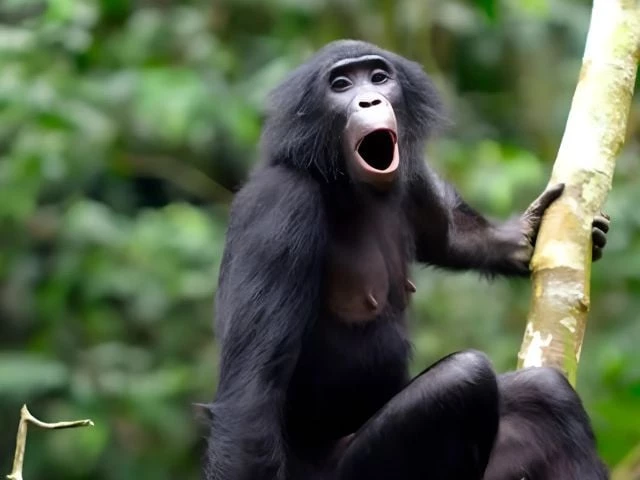Female bonobos band together to fend off males aggression, study reveals
Unity gives Congo female bonobos the edge in food access, safety, and influence.

Female bonobos use strength in numbers to stand up to male aggression and rise through their society’s ranks, according to a new study that sheds light on power dynamics in one of humanity’s closest relatives.
Published Thursday in Communications Biology, the research draws on three decades of observation in the rainforests of the Democratic Republic of Congo, the only region where wild bonobos are found.
The findings reveal that female bonobos form coalitions—even with distant acquaintances—to push back against male aggression and secure resources.
Researchers documented female bonobos chasing males out of trees to access food, as well as forming social alliances that helped them ascend the group’s hierarchy.
Those who collaborated more frequently held higher social status.
“It’s very clear that you don’t want to overstep as a male bonobo,” said lead author Martin Surbeck, a primatologist at Harvard University.
Unlike many other species where male size and strength determine dominance, bonobo society appears to favour female solidarity. Though males are physically larger, they are often outnumbered by unified female groups.
“This is one of the few instances in the animal world where females are able to reverse the usual power imbalance through collective action,” said Surbeck.
The study also found that females allied without needing strong kinship bonds—suggesting social cooperation plays a crucial role in maintaining peace and securing influence.
“These findings support the idea that humans and our ancestors have likely used coalitions to build and maintain power for millions of years,” said biological anthropologist Laura Lewis of the University of California, Berkeley, who was not involved in the study.
The discovery adds to a growing body of research into how female cooperation shapes social structures across species.


























COMMENTS
Comments are moderated and generally will be posted if they are on-topic and not abusive.
For more information, please see our Comments FAQ